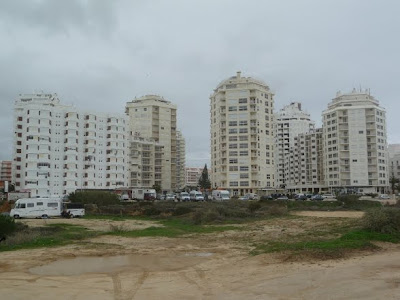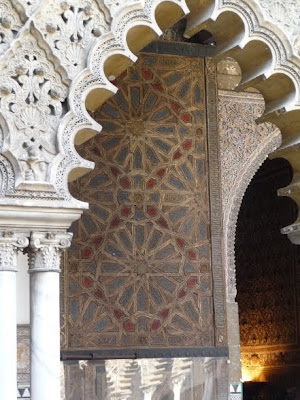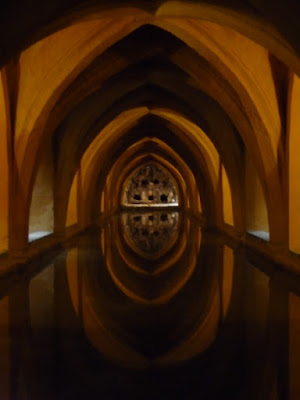We left Portugal finally on Friday the 15th, driving from Lagos on to Spain and Seville, stopping for lunch in Amarcao de Pera, on Portugal's south coast. Our stay in Portugal was most pleasant, and we enjoyed its history, culture, food and drink, scenery, and all, very much. The camprounds and tourism offices are superb, most everything is in (enough) English, and the Portugese themselves are very welcoming.
In every country we visit, we try to learn a few basic expressions--hello, thank you, please, no, pardon, good-bye--but in Portugal we never got much further than
obrigado/
obrigada, the masculine/feminine forms of "I thank you." We settled for the neutral
obriga-duh, which seemed to work well enough. The Portugese are very forgiving, too.
 |
The coast at Amarcao de Pera |
 |
The land forms here are sandstone, with
golden sandy beaches, much gentler surf
than the west coast we saw |
 |
But then, behind the beaches and the RV encampments,
you have the condos; mile after mile of condos |
 |
And condo construction |
 |
Some of the architecture is, um, interesting |
 |
But, then, some of the RVs are, um, interesting, too |





















































